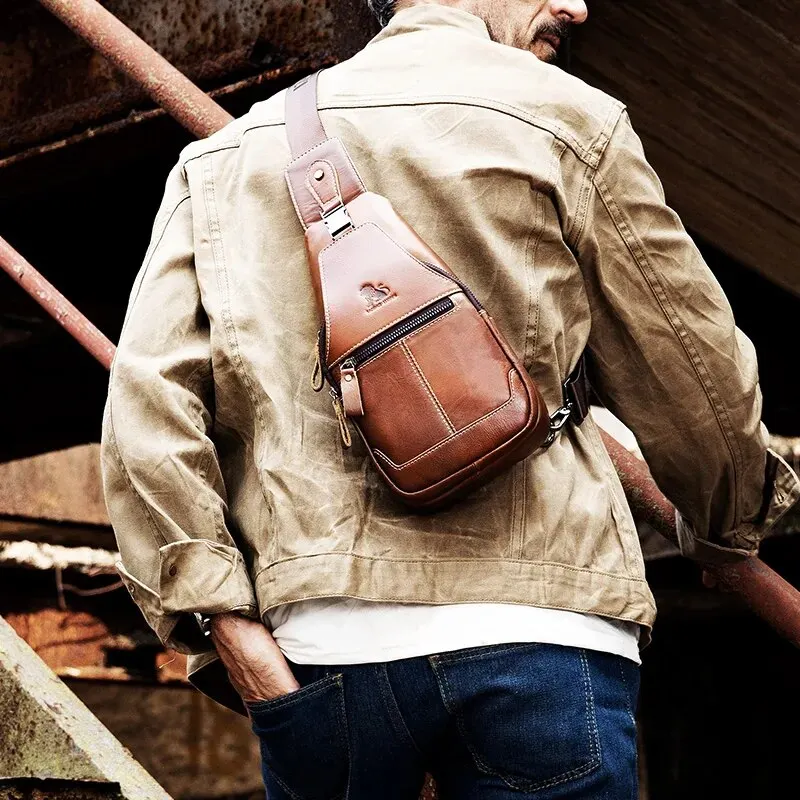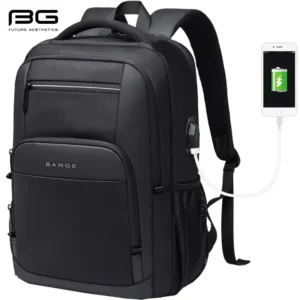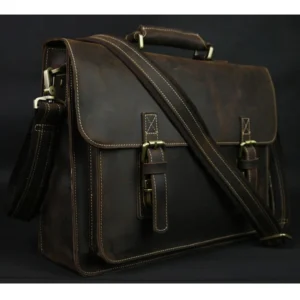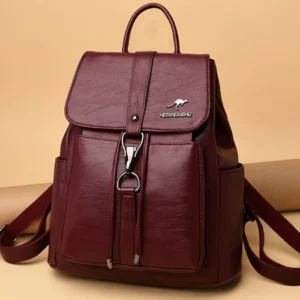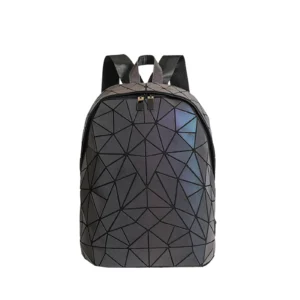Introduction: Understanding the Craftsmanship Behind Timeless Leather Backpacks
A classic leather backpack represents more than just a bag—it embodies generations of craftsmanship, thoughtful design, and material excellence. These enduring designs transcend fleeting fashion trends because they balance form and function in ways that mass-produced alternatives rarely achieve. When you examine a well-crafted leather backpack, you’re looking at the culmination of precise construction techniques that directly influence how the bag performs throughout its lifetime.
The distinction between an ordinary backpack and an exceptional one lies primarily in its construction. Quality craftsmanship determines not just how a backpack looks when new, but how it performs over years—even decades—of daily use. A properly constructed leather backpack develops character rather than deteriorating, becoming more personalized to its owner with each passing year.
Throughout history, leather backpack construction has evolved from purely utilitarian designs to sophisticated pieces that maintain traditional techniques while incorporating modern innovations. This delicate balance between time-honored methods and contemporary approaches defines today’s finest leather goods.
- Quality construction extends a backpack’s lifespan by 5-10 times compared to mass-produced alternatives
- Well-constructed leather backpacks distribute weight more effectively, reducing physical strain
- Proper leather conditioning and waterproofing significantly extends a backpack’s usable life
Essential Materials: The Foundation of a Quality Leather Backpack
The materials selected for a leather backpack form the literal foundation upon which all other quality aspects depend. Material choices impact not only initial appearance but also how the backpack ages, wears, and performs throughout its life. The finest backpacks begin with thoughtful material selection—choices that consider how each component works in harmony with others.
Material sourcing represents a critical first step in creating exceptional leather goods. Premium manufacturers like Summit Carry prioritize relationships with ethical tanneries that maintain consistent quality standards and environmentally responsible practices. These relationships ensure access to the finest raw materials with predictable characteristics.
When designing a classic backpack, material compatibility becomes paramount. Each component—from the main leather panels to thread, hardware, and lining—must work in concert, aging at compatible rates and maintaining structural integrity over time. This harmony of materials ensures that stress points don’t develop prematurely and that the backpack ages gracefully as a cohesive whole.
The selection of premium materials for full-grain leather backpacks forms the essential foundation for all subsequent construction decisions, establishing both aesthetic direction and functional parameters.
Leather Selection: Choosing the Right Hide for Your Purpose
Full-grain leather stands as the gold standard for quality backpacks. This premium material retains the complete top layer of the hide with all its natural markings and grain patterns intact. Full-grain leather offers unmatched durability and develops a rich patina over time, becoming more beautiful with use. Its natural variation in texture provides visual interest while its density offers superior protection against moisture and wear. For backpacks, full-grain leather typically ranges from 5-7 oz (2-3mm) for the main body, with straps often using 8-10 oz (3-4mm) for additional strength.
Top-grain leather represents the next tier in quality. Created by sanding away imperfections from the hide’s surface, top-grain leather offers greater consistency in appearance but sacrifices some durability and character development. This leather works well for backpacks with more uniform aesthetic requirements or when weight reduction matters.
Tanning methods significantly impact leather’s properties:
* Vegetable-tanned leather uses plant-based materials to create firmer, more structured leather that develops rich patina
* Chrome-tanned leather offers superior water resistance and flexibility but with less distinctive aging characteristics
* Combination-tanned leather balances the benefits of both methods
When evaluating leather quality, experts rely on multiple sensory indicators. Premium leather should have a distinctive natural smell (not chemical or plastic-like), feel substantial but supple, and show natural grain variations rather than artificially uniform texture. The cut edges should reveal dense fiber structure rather than loose, spongy material.
Proper maintenance through conditioning leather backpacks ensures that your chosen leather reaches its full potential for both appearance and longevity.
Essential Hardware Components: More Than Just Accessories
Hardware elements do more than just provide closure mechanisms—they’re integral structural components that determine a backpack’s functionality, durability, and aesthetic appeal. Quality hardware transforms a simple leather bag into a sophisticated carrying system.
Buckles: The choice between classic roller buckles, convenient quick-release mechanisms, or traditional sam browne styles impacts both function and appearance. Solid brass and stainless steel buckles offer superior durability, with brass developing an attractive patina while stainless maintains its original appearance. Proper attachment requires reinforced leather backing to distribute stress.
D-Rings and O-Rings: These connection points serve crucial functional roles while adding visual interest. Sizing rings appropriately to their load requirements prevents deformation—typically 1-1.5 inch rings for main straps and 0.5-0.75 inch for accessory attachments. Cast rings offer greater strength than bent wire versions.
Rivets: Double-cap rivets provide clean finishing on both sides while tubular rivets offer a lower profile for less interference with contents. Proper setting techniques prevent spinning or pulling through the leather, often requiring washers on the reverse side for load-bearing applications.
Zippers: YKK remains the industry standard, with #5 coil zippers suitable for most applications and #8-10 for main compartments bearing significant load. Metal zippers provide classic aesthetics while modern coil versions offer smoother operation. Water-resistant zippers add functionality for outdoor applications.
Hardware selection directly impacts both visual appeal and practical functionality. Well-chosen hardware complements the leather’s character while providing reliable service throughout the backpack’s life.
Critical Thread and Fastening Elements
Thread selection, though often overlooked, plays a crucial role in backpack longevity. Two primary options dominate leather goods construction:
Waxed polyester thread: Offers excellent UV resistance, moderate stretch recovery, and traditional appearance. The wax coating provides additional water resistance and reduces friction during stitching.
Bonded nylon thread: Provides superior tensile strength and abrasion resistance, making it ideal for machine-stitched applications under high stress.
Thread thickness follows the Tex system, with common leather applications using Tex-70 (medium) to Tex-138 (heavy) for hand stitching and Tex-40 to Tex-90 for machine work. Thread color selection presents an opportunity for either subtle harmony (matching thread to leather) or visual contrast (highlighting stitch lines as a design element).
Beyond thread, adhesives play supportive roles in leather backpack construction—never as primary structural elements but rather as positioning aids before stitching or for laminating multiple layers. Edge finishing compounds create sealed, smooth edges that resist fraying and moisture penetration while adding professional polish to the final product.
Structural and Supportive Materials
While leather forms the visible exterior, internal structural components provide essential support and organization:
Lining materials: Heavy canvas offers durability and a traditional feel, while modern nylon provides lighter weight and water resistance. Premium backpacks often feature pigskin linings that offer exceptional durability with minimal weight.
Reinforcement materials: Strategic stiffeners maintain shape and prevent sagging. Options include Texon (compressed fiber board), vegetable-tanned leather reinforcements, and synthetic stiffeners like Salpa.
Webbing and strapping: Nylon webbing provides high strength with minimal bulk for interior straps, while leather-wrapped foam creates comfortable carrying straps.
Padding materials: Closed-cell foam offers water resistance and maintains shape, while open-cell foams provide greater flexibility and comfort where water exposure is limited.
The proper selection and integration of these supporting materials significantly impacts both comfort and longevity, preventing the backpack from losing its intended shape even after years of regular use.
Essential Tools for Leather Backpack Construction
Creating quality leather backpacks requires specialized tools designed for precision work with substantial materials. Each tool category serves specific functions:
Cutting Tools
* Sharp rotary cutters for clean, straight cuts on pattern pieces
* Heavy-duty scissors for trimming and detail work
* Specialized leather knives for precise edges and intricate cuts
* Hole punches in various sizes for hardware installation
Marking and Measurement Tools
* Scratch awls for transferring patterns without damaging leather
* Silver marking pens for temporary visible marks
* Metal straightedges and rulers for consistent measurements
* Pattern weights to secure templates during tracing
Punching and Perforating Tools
* Diamond chisels and pricking irons for marking stitch holes
* Rotary punches for hardware installation points
* Stitching wheels for marking consistent stitch lines
Stitching Tools
* Harness needles with blunted tips for hand stitching
* Glover needles with triangular tips for penetrating tough leather
* Stitching pony or clamp to hold work during hand stitching
* Thread conditioning materials (beeswax) for smoother work
Hardware Setting Tools
* Specialized setters for rivets, snaps, and other hardware
* Mallets (rawhide or plastic) for setting without damaging materials
* Backing plates to support hardware during installation
Edge Finishing Tools
* Edge bevelers in various sizes to round sharp edges
* Slickers and burnishers to create smooth edge finishes
* Sandpaper in progressive grits for edge preparation
Quality tools make the difference between frustrating struggle and satisfying craftsmanship. Professional leatherworkers often invest thousands in specialized equipment, but beginners can start with essential tools and expand their collection as skills develop.
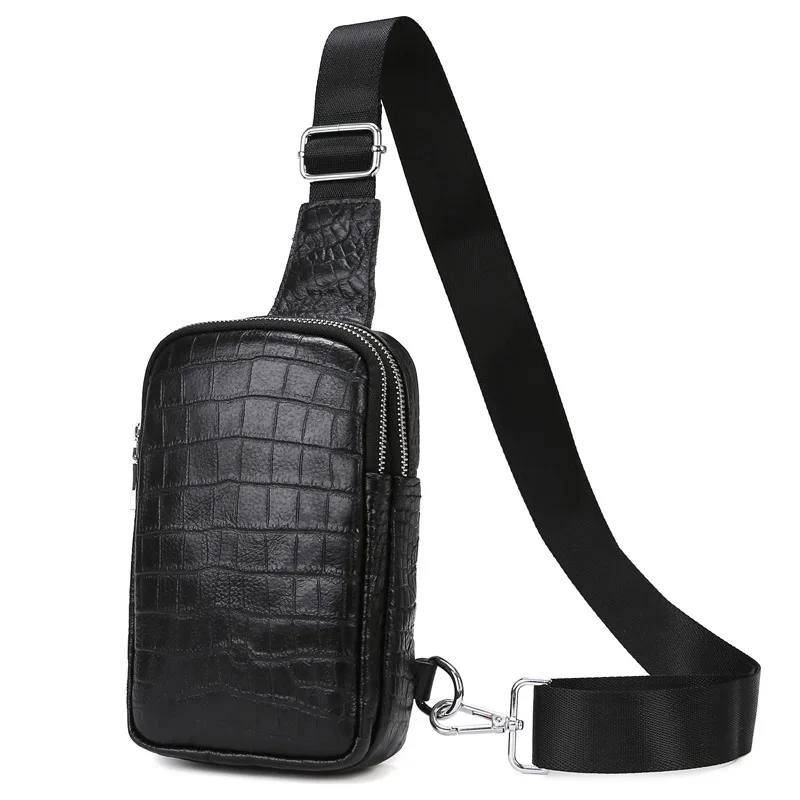
Design Principles and Pattern Development
Classic leather backpack designs balance aesthetic traditions with practical function. Several archetypal styles have proven their value through generations of use:
- The rucksack-inspired design with top flap closure and minimal external features
- The roll-top design offering expandable capacity and superior weather protection
- The structured briefcase-backpack hybrid emphasizing professional appearance
- The adventure-ready pack with multiple external attachment points
Regardless of specific style, successful pattern development begins with precision. Unlike fabric work, leather construction typically avoids seam allowances, instead utilizing edge-to-edge construction methods like butt joints secured with reinforcing strips or overlapping construction with top-stitching.
Essential pattern components include:
* Main panels (front, back, sides) determining overall silhouette
* Gusset pieces creating depth and volume
* Bottom panel designed for weight distribution
* Flap or closure system protecting contents
* Strap system engineered for comfort and durability
* Internal organization features enhancing functionality
Modern vintage leather backpacks often incorporate these classic design principles while adding contemporary features like padded laptop compartments or RFID-protected pockets. The most successful designs honor traditional aesthetics while embracing functional improvements.
Leather Preparation Techniques
Proper preparation transforms raw leather into construction-ready components, setting the foundation for professional results:
Accurate Cutting
Cutting leather requires considering grain direction—aligning it vertically on straps for maximum strength and consistently across main panels for uniform appearance. Sharp tools create clean edges that require minimal finishing, while careful layout minimizes waste of valuable material.
Edge Preparation
Beveling edges reduces sharp corners that could wear prematurely or cause discomfort. The appropriate beveler size depends on leather thickness—typically 0.5-1mm bevels for thin leather and 1-2mm for thicker pieces. After beveling, progressive sanding (220-600 grit) creates smooth surfaces ready for finishing.
Skiving Techniques
Skiving—thinning leather in specific areas—reduces bulk at seams and creates flexible fold points. Critical skiving locations include:
* Strap ends that will pass through buckles
* Overlap areas where multiple pieces join
* Fold points that require flexibility
* Edges that will be turned under or joined
Proper preparation techniques work in harmony with quality waterproofing for leather bags to ensure both immediate quality and long-term performance.
Core Assembly Techniques for a Classic Leather Backpack
Assembly represents the phase where individual components transform into a cohesive whole. Successful assembly requires strategic planning about sequence and technique:
The “inside-out” approach begins with internal components (pockets, dividers, reinforcements) before adding external panels and features. This method provides easier access to interior construction but can complicate final external stitching.
Conversely, the “outside-in” approach starts with the main structure, adding internal features later. This creates cleaner external appearances but requires careful planning for interior access during later stages.
Professional assembly relies on temporary holding methods before permanent attachment. Options include:
* Small binder clips that don’t mar leather
* Double-sided tape for positioning
* Temporary hand basting with large stitches
* Contact cement for permanent positioning before stitching
Successful assembly requires managing bulk at intersection points where multiple layers converge. Techniques include:
* Strategic skiving of overlapping pieces
* Staggered seam placement to distribute thickness
* Specialized presser feet when machine stitching thick areas
Proper leather care for travel backpacks begins during construction, with techniques that prevent damage during assembly while setting the foundation for long-term durability.
Constructing the Main Body Structure
The main body establishes the backpack’s fundamental structure through one of several construction approaches:
Single-Piece Wrap Construction
This method uses one large leather piece forming the front, bottom, and back in a continuous panel, with side gussets added separately. Benefits include minimal seams for clean appearance and improved water resistance, though it requires larger leather pieces and limits design variation.
Multi-Panel Construction
This approach joins separate front, back, bottom and side panels. It allows more efficient leather use and greater design flexibility but introduces more potential failure points at seam intersections.
Gusset Integration
Gussets create depth while connecting main panels. Techniques include:
* Bound Edge Gussets: Main panels and gusset edges finished separately then joined
* Folded Gussets: Leather creased to create sharp edges without separate side pieces
* Piped Gussets: Including cord-filled piping at seams for reinforcement and visual interest
The challenge with any method lies in maintaining precise alignment while handling multiple leather pieces of substantial weight. Professionals often use alignment marks and progressive clamping to ensure panels meet precisely at corners and seams.
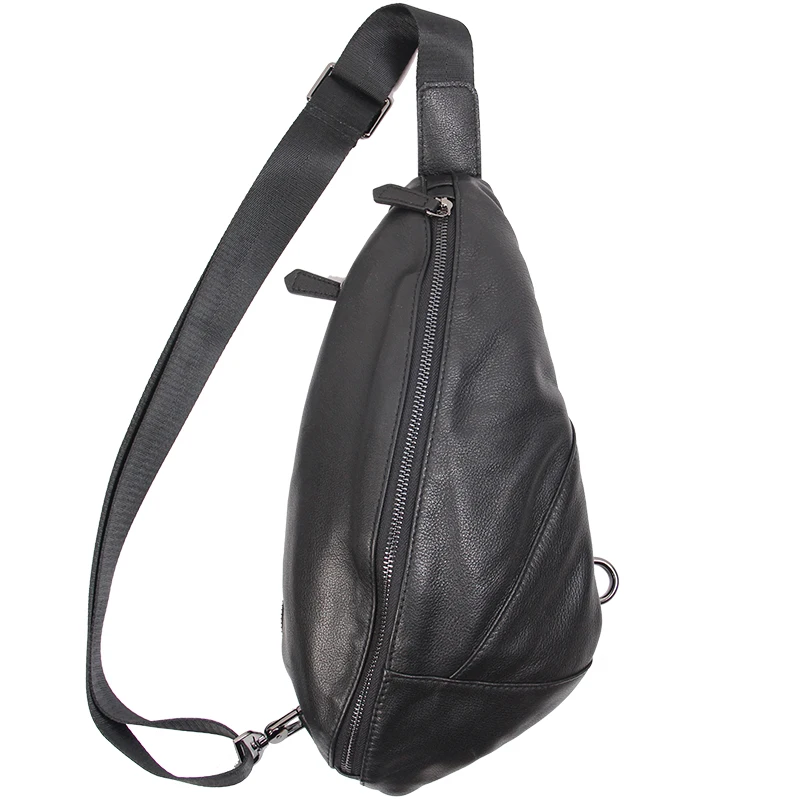
Bottom Panel Construction and Reinforcement
The bottom panel bears the greatest weight and experiences the most abrasion, making it critical to durability:
Structured Bottom Options
* Separate Panel Construction: Adding a distinct bottom piece creates sharp edges and allows reinforcement
* Wrapped Construction: Extending the back panel to form the bottom creates a smooth transition but less structure
* Reinforced Internal Bottom: Adding an internal stiffener between leather layers provides structure without external seams
Corner Construction
Corners represent vulnerable stress points requiring special attention:
* Box corners use separate triangular gussets to create dimensional structure
* Stitched corners fold and overlap material, securing with reinforced stitching
* Riveted corners add hardware reinforcement at key stress points
Protective Elements
Metal feet or studs elevate the backpack above ground surfaces, preventing abrasion and moisture contact. Ideal placement positions four feet in a rectangular pattern, centered on pressure points where the loaded bag naturally rests.
The best men’s leather backpacks incorporate these bottom reinforcement techniques to ensure years of reliable performance even when regularly placed on varied surfaces.
Strap Systems and Load-Bearing Components
Strap systems translate a backpack’s weight to the wearer’s body, making their construction critical to both comfort and durability:
Shoulder Strap Construction
Quality shoulder straps typically feature:
* Multiple leather layers for durability without excessive stiffness
* Internal padding (closed-cell foam or felt) for comfort
* Strategic widening at shoulder contact points to distribute weight
* Gradual narrowing toward attachment points to reduce bulk
* Reinforcement stitching where straps connect to the backpack body
Attachment Methods
Strap attachment points experience maximum stress, requiring robust construction:
* X-box stitching creates multiple reinforcement points in high-stress areas
* Bar-tack stitching provides concentrated reinforcement at precise points
* Riveted attachments add hardware reinforcement to stitched connections
* Distribution plates (internal reinforcement pieces) spread stress across wider areas
Adjustability Features
Strap adjustability enhances comfort while adding construction complexity:
* Ladder-style adjustment with multiple attachment points
* Sliding buckles with friction retention
* Strap keepers preventing excess material from flapping
Well-designed carry systems distinguish premium backpacks from basic bags, with thoughtful engineering evident in both comfort and longevity.
Internal Organization and Pocket Integration
Internal organization transforms a simple leather sack into a highly functional tool:
Main Compartment Structure
The primary compartment typically features:
* Open design maximizing capacity and flexibility
* Suspended divider panels creating separate sections without external seams
* Structured opening maintaining accessibility when the bag is open
Specialized Pocket Construction
Functional pockets require thoughtful integration:
* Patch pockets (single-layer attachments) provide simple organization with minimal bulk
* Bellows pockets (gusseted construction) expand to hold bulkier items
* Zippered security pockets protect valuable items
* Slip pockets offer quick access to frequently used items
Laptop Compartment Integration
Modern classics incorporate technology protection:
* Padded panels using high-density foam
* Suspended construction preventing device contact with the bottom
* Microfiber or smooth lining preventing scratches
The sequence of pocket attachment during construction significantly impacts final quality. Typically, makers first attach internal organization features to lining material, then install the completed lining assembly into the leather shell as a unit.
Advanced Stitching Methods for Durability
Stitching represents both functional engineering and decorative artistry in leather backpack construction:
Hand Stitching Excellence
The saddle stitch remains the gold standard for leather durability:
* Uses two needles working from opposite sides of the leather
* Creates independent locking stitches—if one breaks, others remain secure
* Requires precision hole preparation using pricking irons or stitching chisels
* Typically employs waxed thread for improved durability and water resistance
Proper saddle stitching technique includes:
1. Consistent tension on both thread ends
2. Proper thread alignment creating uniform “slant”
3. Securing thread paths to prevent unraveling
4. Backstitching or thread-burying to finish seams
Machine Stitching for Production
Machine stitching offers efficiency with appropriate adjustments:
* Industrial walking-foot machines handle leather’s thickness variations
* Thread tension adjustments accommodate leather’s minimal elasticity
* Specialized needles (wedge-point or cutting-point) penetrate leather cleanly
* Extended stitch length (3-4mm) reduces perforation weakening
Reinforcement Techniques
Critical areas benefit from specialized stitching:
* Box-X stitching distributes stress across attachment points
* Bar tacking creates dense, localized reinforcement
* Double-row stitching provides redundancy in high-stress seams
Leather laptop backpacks particularly benefit from these advanced stitching techniques, ensuring they can safely support valuable technology through years of daily use.
Edge Finishing Techniques for Professional Results
Edge treatment transforms raw-cut leather into refined, durable surfaces while showcasing craftsmanship quality:
Edge Preparation Sequence
1. Trim edges precisely using sharp cutting tools
2. Bevel edges appropriately for thickness (larger bevels for thicker leather)
3. Sand progressively (220, 400, 600 grit) for smooth surface
4. Clean thoroughly to remove dust and debris
Burnishing Techniques
Burnishing creates smooth, sealed edges through friction-generated heat:
* Apply water, gum tragacanth, or specialized burnishing compound
* Use wood or bone slicker with firm, consistent pressure
* Work in sections until edges become smooth and slightly shiny
* Multiple applications create increasingly refined results
Edge Painting Alternative
For colored edges or leathers resistant to burnishing:
* Apply flexible edge paint matching or contrasting with leather color
* Build multiple thin layers rather than one thick application
* Sand lightly between coats for exceptional smoothness
* Seal with clear coat for additional protection
Edge Folding Considerations
Folded edges create clean lines without exposed leather core:
* Skive leather thinly at fold point
* Score lightly to create consistent fold line
* Use adhesive to secure fold before stitching
* Top-stitch close to edge for permanent security
Professional edge finishing requires patience and attention to detail but provides immediate visual evidence of quality craftsmanship.
14 Inch Leather Laptop Backpack, Brown Leather Backpack, Men's Leather Backpack, Vintage Leather Backpack
Price range: $177.28 through $199.12 Select options This product has multiple variants. The options may be chosen on the product pageDesigner Men's Backpack, Men's Leather Laptop Backpack, Men's Leather Work Backpack
Price range: $158.04 through $160.04 Select options This product has multiple variants. The options may be chosen on the product page15 Inch Leather Laptop Backpack, Leather Briefcase Backpack
$332.96 Select options This product has multiple variants. The options may be chosen on the product page17 Inch Leather Laptop Backpack, Men's Leather Travel Backpack, Men's Leather Work Backpack
Price range: $106.28 through $143.88 Select options This product has multiple variants. The options may be chosen on the product pageLuxury Leather Backpack, Small Leather Backpack, Women's Leather Backpack
Price range: $137.48 through $138.28 Select options This product has multiple variants. The options may be chosen on the product pageDesigner Women's Backpack, Luxury Leather Backpack
Holographic Geometric Laser Diamond PU Leather Women’s Fashion Backpack with Glow-in-the-Dark Design$112.20 Select options This product has multiple variants. The options may be chosen on the product page
Durability Factors in Classic Leather Backpack Construction
True durability comes from understanding how backpacks age and fail, then engineering solutions into the initial construction:
Critical Stress Points
Key vulnerability areas requiring special attention:
* Strap attachment points bearing the bag’s entire weight
* Handle connections experiencing sudden loading
* Bottom corners subject to abrasion and impact
* Zipper endpoints where stress concentrates
Material Selection Impact on Longevity
Material choices directly influence long-term durability:
* Full-grain leather ages gracefully with minimal structural degradation
* Quality hardware avoids plating failure and mechanical weakness
* Appropriate thread weight provides sufficient strength margin
* Compatible materials age at similar rates, preventing component failure
Balanced Construction Principles
Evenly distributed stress extends overall lifespan:
* Symmetrical design prevents warping and uneven wear
* Strategic reinforcement at predictable stress points
* Flexible construction accommodates movement without strain
* Weight distribution engineering prevents sagging and deformation
Quality leather backpacks designed with ethically sourced materials not only provide environmental benefits but often demonstrate superior durability through higher-quality inputs and construction standards.
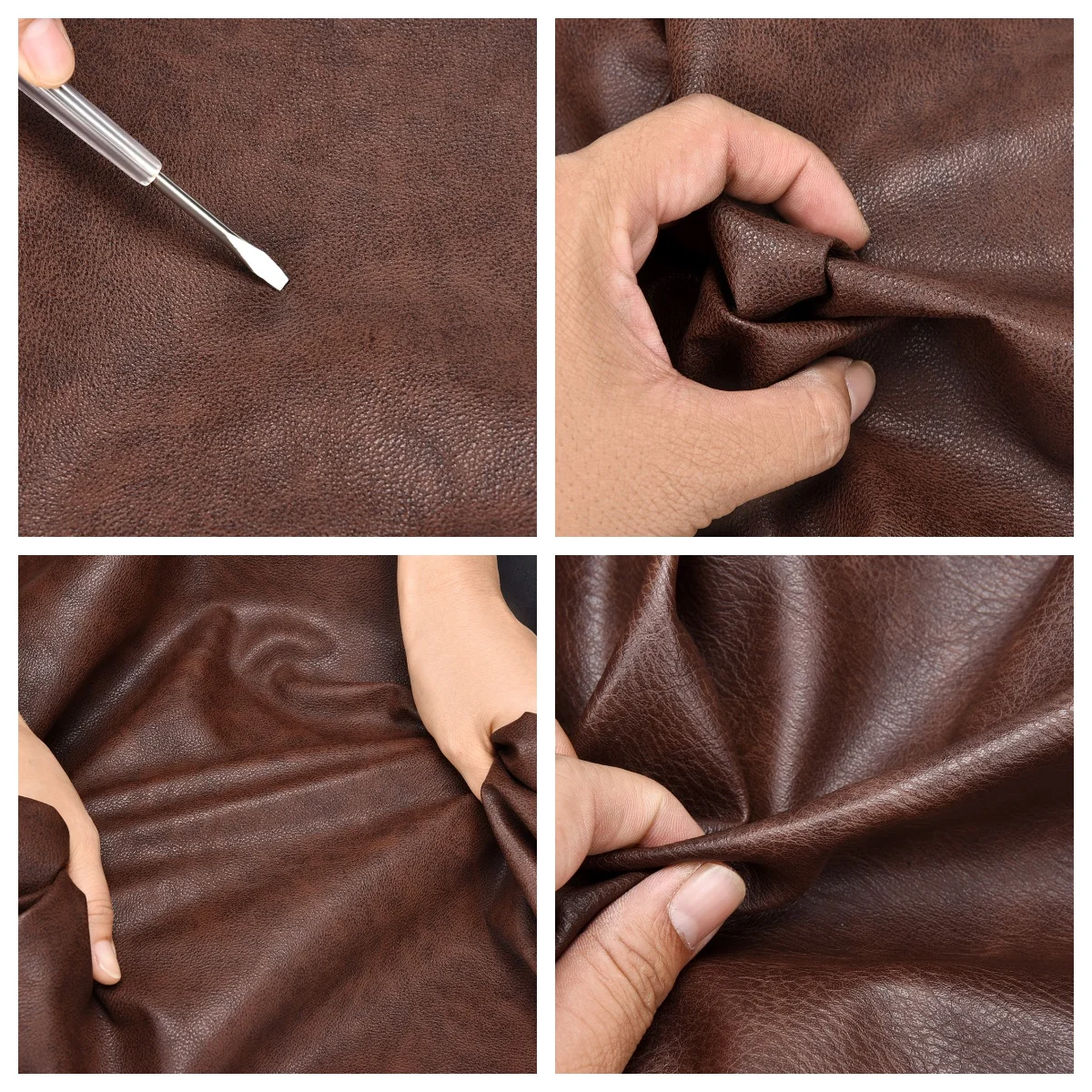
Troubleshooting Common Construction Challenges
Even experienced leatherworkers encounter challenges during backpack construction. Understanding solutions for common issues improves both craftsmanship and repair capabilities:
Addressing Leather Stretching
* Problem: Leather stretches unevenly during use, causing distortion
* Solution: Pre-stretch high-stress areas during construction, incorporate non-stretch reinforcement at critical points, choose appropriate leather weight for structural components
Fixing Misalignment
* Problem: Component edges don’t align properly during assembly
* Solution: Use temporary clips before permanent attachment, mark alignment points clearly, assemble in logical sequence from fixed reference points
Managing Bulky Seams
* Problem: Multiple leather layers create excessive bulk at intersections
* Solution: Skive leather strategically where layers overlap, stagger seam placement to distribute thickness, use appropriate presser feet when machine sewing
Hardware Installation Issues
* Problem: Rivets pull through or hardware loosens over time
* Solution: Use backing washers to distribute pressure, choose appropriate hardware size for leather thickness, maintain minimum distance from edges for all hardware
Stitching Corrections
* Problem: Uneven stitching or thread tension problems
* Solution: Maintain consistent hole spacing using stitching chisels, control thread tension manually during hand stitching, use appropriate machine settings for leather weight
Essential Leather Backpack Construction Terminology
Understanding technical terminology enables clearer communication about leather goods:
Material Terms
* Full-grain: Complete top layer of hide with natural markings intact
* Top-grain: Hide with surface layer removed for consistency
* Patina: Desirable color and texture changes developing over time
* Pull-up: Temporary color lightening when leather is bent or stretched
* Temper: Leather’s softness/firmness spectrum
Construction Terms
* Skiving: Controlled thinning of leather in specific areas
* Burnishing: Creating smooth, polished edges through friction
* Box stitch: X-shaped reinforcement stitching pattern
* Saddle stitch: Two-needle hand stitching technique for superior strength
* Gusset: Side panel creating depth in a bag structure
Tool Terminology
* Pricking iron: Tool creating multiple aligned holes for stitching
* Edge beveler: Tool removing sharp corners from cut leather edges
* Stitching pony: Clamping device holding leather during hand stitching
* Slicker: Tool creating smooth edges through burnishing
Is Handcrafted Construction Superior to Machine-Made?
The debate between hand and machine construction reveals nuances important to both makers and users:
Hand Construction Advantages
* Creates stronger stitching through saddle stitch technique
* Allows precise adjustment for leather variations
* Facilitates complex constructions difficult for machines
* Permits continual quality assessment during production
Machine Construction Benefits
* Provides exceptional stitch consistency
* Enables faster production with good quality control
* Achieves perfectly straight stitching lines
* Creates strength through precision thread tension
Hybrid Approaches
Many luxury leather backpacks combine techniques strategically:
* Machine stitching for long, straight seams
* Hand stitching for reinforcement points and complex junctions
* Machine cutting for precision with hand finishing for refinement
* Industrial efficiency with artisanal attention to critical details
Quality Indicators Regardless of Method
* Consistent stitch length and tension
* Precise edge finishing
* Appropriate reinforcement at stress points
* Clean interior construction
* Hardware installed with proper backing
The superiority question ultimately depends on specific techniques rather than broad categories—exceptional machine work surpasses mediocre hand construction, while master hand stitching achieves results machines cannot replicate.
How to Identify Quality Construction in a Finished Backpack
Evaluating leather backpack construction quality requires attention to specific details:
Visual Inspection Points
* Examine stitch regularity and tension—consistent, straight lines indicate quality
* Check edge finishing for smoothness and uniformity
* Assess hardware installation for secure attachment and appropriate backing
* Look for reinforcement at stress points (handle attachments, strap connections)
* Evaluate symmetry and alignment of components
Tactile Evaluation
* Feel for appropriate leather weight—too thin suggests compromised durability
* Test zipper smoothness and ease of operation
* Check strap flexibility and comfort against shoulders
* Examine interior construction for clean finishing and secure attachments
* Assess overall weight distribution when loaded
Stress Testing
* Gently pull straps to assess attachment security
* Test hardware function multiple times
* Check handle strength with moderate weight
* Examine stitching under slight stress for any gaps or weakness
Red Flags
* Uneven stitching or loose threads
* Raw, unfinished interior edges
* Hardware attached without visible reinforcement
* Excessive glue residue suggesting structural dependence on adhesive
* Asymmetrical components indicating hurried production
Quality construction represents an investment that pays dividends through years of reliable service, developing character rather than deteriorating with age.
